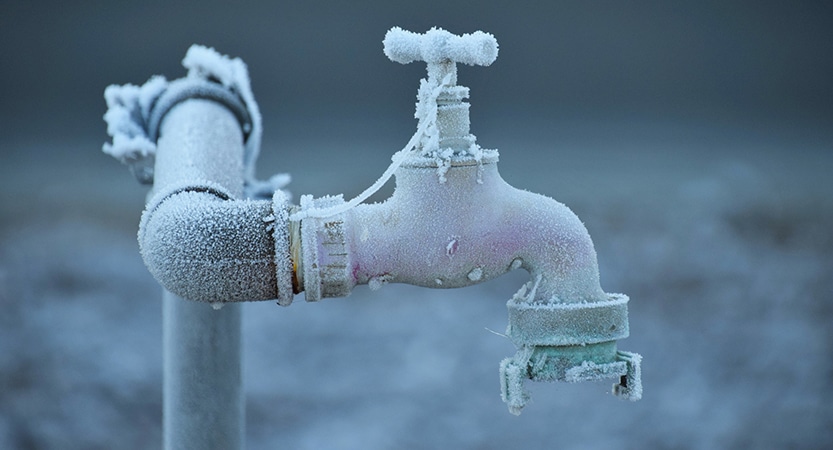Preventing Frozen Pipes in Cold Weather: Key Strategies
Preventing Frozen Pipes in Cold Weather: Key Strategies
Blog Article
Each person maintains their personal thinking involving How To Avoid Freezing Pipes.

Winter can damage your pipes, especially by freezing pipelines. Here's exactly how to prevent it from taking place and what to do if it does.
Introduction
As temperature levels drop, the danger of icy pipes boosts, possibly causing pricey repair work and water damages. Recognizing just how to prevent frozen pipes is vital for home owners in cold climates.
Avoidance Tips
Insulating vulnerable pipes
Cover pipes in insulation sleeves or use heat tape to shield them from freezing temperature levels. Focus on pipes in unheated or outside locations of the home.
Home heating strategies
Maintain interior spaces effectively heated up, especially locations with plumbing. Open up cupboard doors to allow cozy air to distribute around pipelines under sinks.
Exactly how to identify icy pipes
Try to find reduced water circulation from faucets, uncommon odors or noises from pipelines, and visible frost on subjected pipelines.
Long-Term Solutions
Structural modifications
Take into consideration rerouting pipelines away from outside wall surfaces or unheated areas. Add additional insulation to attic rooms, basements, and crawl spaces.
Updating insulation
Purchase top notch insulation for pipes, attics, and wall surfaces. Appropriate insulation aids maintain constant temperatures and decreases the danger of icy pipelines.
Shielding Exterior Plumbing
Yard hose pipes and outdoor faucets
Separate and drain pipes yard pipes prior to wintertime. Install frost-proof spigots or cover exterior taps with protected caps.
Comprehending Frozen Pipelines
What triggers pipes to ice up?
Pipes ice up when subjected to temperatures listed below 32 ° F (0 ° C) for prolonged periods. As water inside the pipelines freezes, it broadens, taxing the pipe walls and potentially creating them to rupture.
Risks and problems
Icy pipes can result in water system disturbances, property damage, and costly repair work. Ruptured pipelines can flooding homes and trigger considerable architectural damage.
Indications of Frozen Water Lines
Recognizing frozen pipes early can stop them from bursting.
What to Do If Your Pipes Freeze
Immediate activities to take
If you presume icy pipelines, maintain taps available to eliminate pressure as the ice melts. Utilize a hairdryer or towels soaked in warm water to thaw pipelines slowly.
Conclusion
Protecting against icy pipes needs proactive measures and quick responses. By comprehending the causes, indicators, and preventive measures, house owners can protect their plumbing throughout winter.
5 Ways to Prevent Frozen Pipes
Drain Outdoor Faucets and Disconnect Hoses
First, close the shut-off valve that controls the flow of water in the pipe to your outdoor faucet. Then, head outside to disconnect and drain your hose and open the outdoor faucet to allow the water to completely drain out of the line. Turn off the faucet when done. Finally, head back to the shut-off valve and drain the remaining water inside the pipe into a bucket or container. Additionally, if you have a home irrigation system, you should consider hiring an expert to clear the system of water each year.
Insulate Pipes
One of the best and most cost-effective methods for preventing frozen water pipes is to wrap your pipes with insulation. This is especially important for areas in your home that aren’t exposed to heat, such as an attic. We suggest using foam sleeves, which can typically be found at your local hardware store.
Keep Heat Running at 65
Your pipes are located inside your walls, and the temperature there is much colder than the rest of the house. To prevent your pipes from freezing, The Insurance Information Institute suggests that you keep your home heated to at least 65 degrees, even when traveling. You may want to invest in smart devices that can keep an eye on the temperature in your home while you’re away.
Leave Water Dripping
Moving water — even a small trickle — can prevent ice from forming inside your pipes. When freezing temps are imminent, start a drip of water from all faucets that serve exposed pipes. Leaving a few faucets running will also help relieve pressure inside the pipes and help prevent a rupture if the water inside freezes.
Open Cupboard Doors
Warm your kitchen and bathroom pipes by opening cupboards and vanities. You should also leave your interior doors ajar to help warm air circulate evenly throughout your home.

Hopefully you liked our section on Winter Plumbing Precautions: Preventing Frozen Pipes. Thank you so much for spending some time to read our article. Enjoyed our write-up? Please quickly share it. Let somebody else check it out. I praise you for your time. Come back soon.
Book Today! Report this page